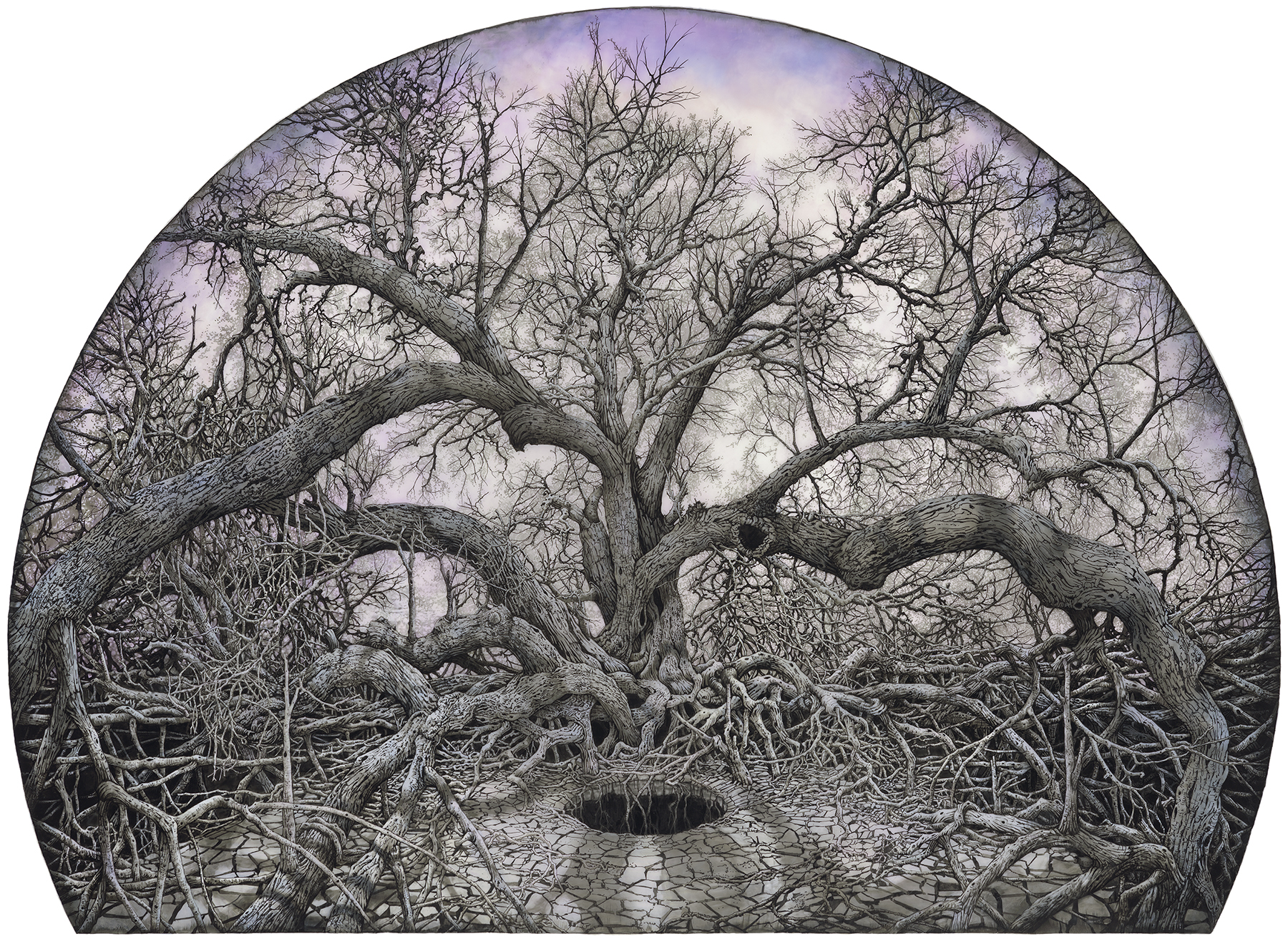
As we are living in a digital age, it’s safe to say that typewriters are an artifact of the past. But for Rachel Mulder, an artist living in Portland, Oregon, the classic typing machine still proves to be an important creative tool. With a meticulous eye, and even more patience, Mulder uses her typewriter as a way to “draw” from old photographs, keystroke by keystroke. “There is something so special in the error of the human hand,” she says, “-that I enjoy while conversely and fretfully attempting to attain perfection.”

Using a limited number of symbols, Mulder is able to create facial detail and shading in her portraits with remarkable precision, much like an etching. One of the most striking characteristics of her typewritten images is her palette, ranging from black and white tones to the four-color method used in commercial printing: magenta, cyan, and yellow carbon on paper. It’s a time-consuming, and admittedly obsessive, process that she says embraces “the happy accident coveted in traditional printmaking.”

She explains: “By using a grid and a photograph, each image in this series was recreated and transformed in a methodical manner square-by-square, bottom to top, using a variety of media offering some form of control. This was accomplished by the tool itself, such as a uniform rubber stamp, or actively drawn, like repeated hand-drawn triangles. By treating each individual segment as its own drawing, separate from yet part of the greater whole, the resulting image, though recognizable, is simply a buildup of repetitive marks.”
















 Using ballpoint pen, Helena Hauss draws scenes that she says are “about self-acceptance through self-deprecation and satire.” The process is laborious for the Paris artist, who has said the choice of pen is deliberate in its stubbornness. The below work, "Afternoon Delight," took 300 hours to complete.
Using ballpoint pen, Helena Hauss draws scenes that she says are “about self-acceptance through self-deprecation and satire.” The process is laborious for the Paris artist, who has said the choice of pen is deliberate in its stubbornness. The below work, "Afternoon Delight," took 300 hours to complete.
 Rachael Pease’s lush drawings, crafted in India ink on frosted mylar, create mystical settings from trees and plantlife observed in reality. The artist grew up in rural Indiana among similar backdrops. And her drawings are rooted in photographic collages created from her journeys.
Rachael Pease’s lush drawings, crafted in India ink on frosted mylar, create mystical settings from trees and plantlife observed in reality. The artist grew up in rural Indiana among similar backdrops. And her drawings are rooted in photographic collages created from her journeys.